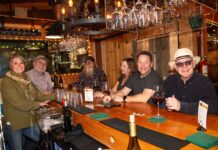The San Jacinto Ranger District is proposing hazardous fuels reduction activities in the May Valley area. The project area includes approximately 2,816 acres of National Forest System land. Approximately 864 acres are proposed for treatment within the project area.
The project lies between and incorporates additional treatment on the Southridge fuel break and Bonita Vista fuel break. These prior fuel break projects, combined with the May Valley Fuels Project, are part of a larger strategy to reduce fuels and protect communities, critical infrastructure, and economic stability.
Once completed, an effective fuels reduction buffer would be in place east of Highway 243 and south of Idyllwild, east to the Bonita Vista community and south to Highway 74. A key portion of the Southridge fuel break would be completed, providing significant protection for the Idyllwild community and filling a current “hole“ in the district’s strategic fuel break system.
Strong evidence supports the efficacy of fuels reduction treatments in southern California and on the San Bernardino National Forest. Scientists (Conrad and Weise 1998) have documented previous examples of effectiveness in fire and landscape planning and implementation on the San Jacinto Ranger District. The 1996 Bee Fire and the 2009 Grass Valley Fire in the San Bernardino mountains are two examples of how strategically placed fuel treatments can affect the outcome of large fires in vegetation comparable to that of the May Valley project area.
Need for Action
The project area is dominated by dense, continuous expanses of chaparral averaging 20 to 85 years old, and mixed-conifer and oak forest. The older age-class chaparral is very flammable because of its resinous foliage, woody stems, and accumulated dead branches. The extensive brush in the understory of conifer stands creates ladder fuels, which allow a ground fire to climb into the lower branches of the trees, and spread into a crown fire.
These conditions, along with average slopes of 40 percent, the dry climate, and unstable atmospheric conditions typical of the area, contribute to the potential for extreme fire behavior across large portions of the project area.
The project will reduce fire-line intensity, flame length, and rate of spread in wildfires in chaparral and mixed-conifer stands in the wildland-urban interface on National Forest System lands. Creating and maintaining fuel breaks and areas where fuels are reduced will enhance firefighters’ ability to suppress fire safely and effectively, and protect infrastructure such as roads, homes and other facilities.
Proposed Action
Within mixed oak and conifer and chaparral-dominated units, excluding designated fuel breaks, hazardous fuels would be reduced yielding healthy and productive forested stands within the wildland-urban interface. Approximately 664 acres of mixed oak and conifer forest and chaparral would be treated using hand or mechanical methods and prescribed fire.
Within designated fuel break units, approximately 166 acres of chaparral and mixed oak and conifer stands would be treated using hand or mechanical methods and prescribed fire.
Within the meadow-dominated unit, approximately 34 acres of mixed-meadow and conifer would be treated using hand treatments and prescribed fire. Hand treatments would be used to cut and pile trees and brush. Pile burning and broadcast burning would be employed to reduce slash, return fire to the landscape, and maintain the meadow in an open condition.
No changes to road or trail density or travel management are proposed as a part of this project. The existing road system is generally adequate for proposed project treatment activities.
Alternative
The only alternative to the proposed fuels project is taking no action.










